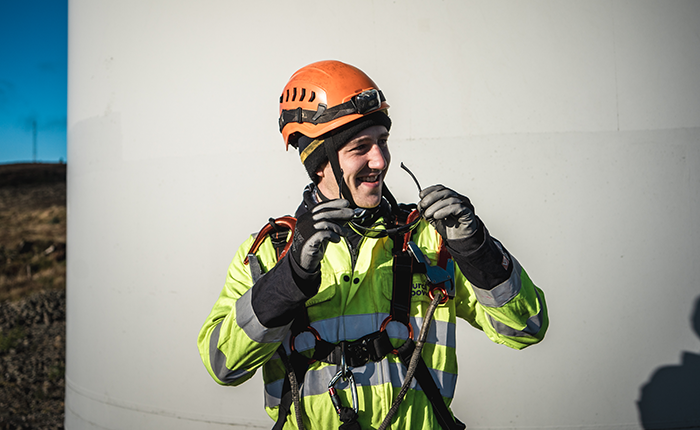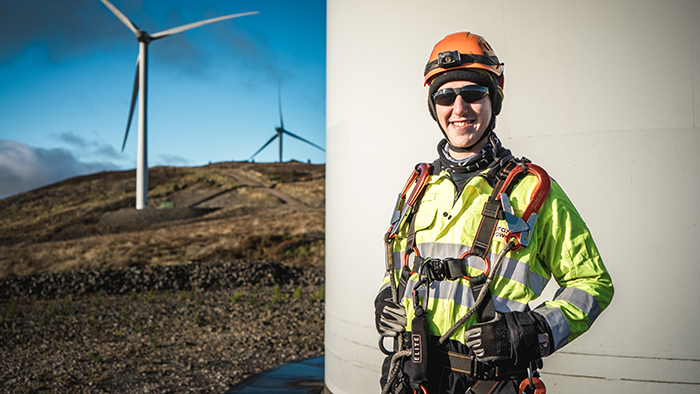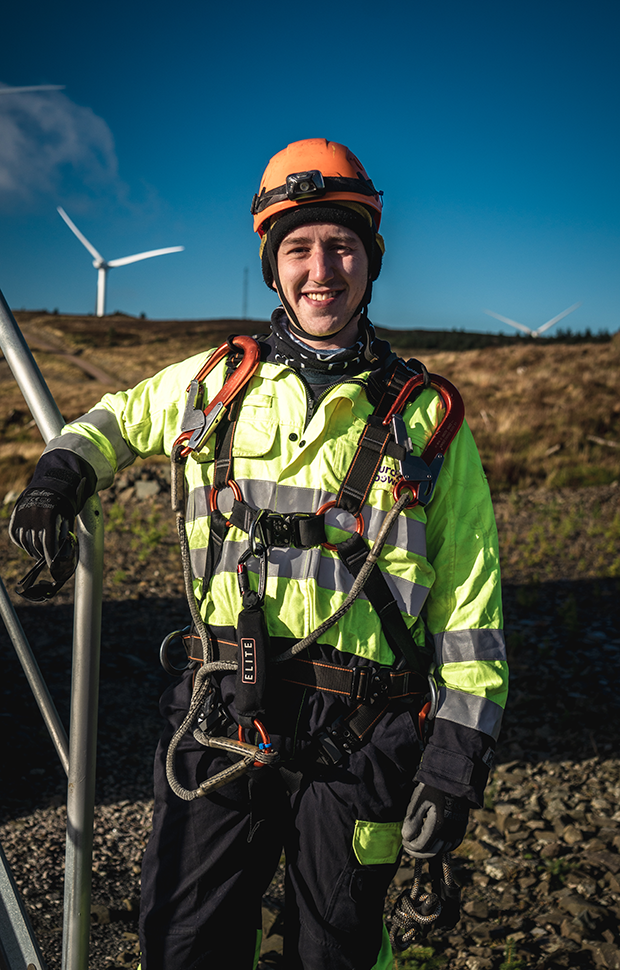Matthew Young
When did you join Natural Power?
I joined Natural Power in August 2021, shortly after completing my MEng degree. I originally started as an Energy Analyst, where I enjoyed gaining an understanding of the energy yield process through a range of topography types. However, months of lockdown had given me itchy feet, and around April 2022 I was lucky enough to be able to move within the company, towards both the inspections and reliability engineering teams.
What does your role entail?
The inspections team role is an ideal blend of on-site work followed by desk-based report writing. Every project involves something new; whether that’s a different scope of work, a different turbine type, a different country - – or all of the above.
Making the transition from desktop to nacelle meant my first job was finding out if I was scared of heights. I didn’t think I was, but you can’t really tell until you’re stood on top of a nacelle, 100m high, clipped on by what is essentially a rope lanyard (albeit with a more than sufficient 25kN force rating). Thankfully I wasn’t, as I now get to enjoy a view of some of the most unique landscapes imaginable.
Today I’m able to utilise my engineering background and problem-solving skills to perform turbine inspections. From the construction of the foundation, up to the communication between the anemometry station and the blade pitch system, every bolt and sensor onboard is crucial. Ultimately, it’s my job to increase the life expectancy of a turbine. This can be done by performing direct retrofits, or visual inspections to identify that all components, internally and externally, are in a good condition. If a component requires attention, this is documented with a severity rating and reported to the onsite team with a suggestion for repair.
I enjoy turbine inspections because you get a thorough look into all the integrated systems onboard. The role stays fresh because an unrelated turbine has its own nuanced features, such as methods of cooling systems, or the locations of components. On one project you might be looking at Enercon machines in the Scottish Highlands, and the next you’re on GE (General Electric) machines in northern Sweden.
As well as turbine inspections, Natural Power perform technical site inspections at solar farms. Noting the differences in infrastructure from one site to another is equally as interesting. Additionally, solar sites are situated in sunnier regions – so don't forget your sun cream!
Given the seasonal nature of on-site work with harsh, snowy conditions being unfavourable for obvious health and safety reasons, I also help the reliability team with turbine condition monitoring. This entails analysing the vibrational data which is picked up from accelerometers positioned along the drivetrain, from the main shaft to the high-speed shaft and generator. As a result, depending on given frequencies and amplitudes, the location of a developing damage can be identified. This pro-active approach can often prevent hidden damages from propagating along the drivetrain and is timesaving for on-site inspectors who need to get a visual of the damage. Whether you’re up a turbine or on a Teams call, there’s always something to keep you occupied.

What are the most rewarding and challenging parts of your role?
Call me a tree-hugger but the most rewarding aspect would have to be the overall fact that we’re playing a part in bringing neutrality towards carbon emissions on Earth.
Every day brings new challenges, whether that’s working under adverse weather conditions, or understanding new technologies as they advance. My role requires strong observational skills, an eye for safety and a strong work ethic. It can be challenging to identify the vibrations of a bearing’s rolling element fault frequency, but it’s satisfying when the endoscopic inspection reveals you were right. Another challenging aspect can be when the climb assist on your turbine isn’t operational. I thought a coffee woke me up in the morning, but a good climb up to the nacelle gets the heart pumping. Thankfully the larger turbines built these days have lifts to the top!
What is the most interesting inspection project you have undertaken and why?
For me it’s the people you meet on sites who can really make a project interesting. You discover folk from all over the world who each have an individual outlook on the renewable industry and invaluable knowledge from differing disciplines.
With regards to a specific project itself, I can’t say anything more, but the one with the grease.

Provide a hidden talent or quirky fact about yourself!?
I’m a big fan of cycling and think it’s the best way to get about. I spent one summer cycling through Czech Republic-Austria-Slovakia-Hungary and highly recommend it as a means for anyone looking to tour a country.

